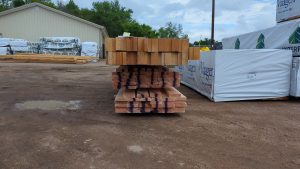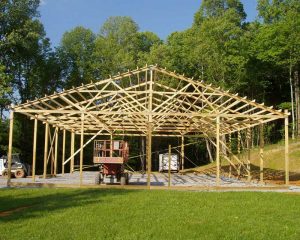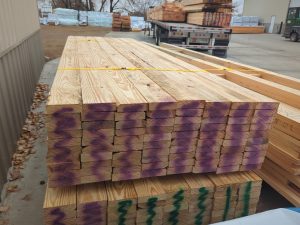As a teenager I worked for Blaine Johnston Construction in the Spokane Valley twice, the summer after my freshman year of college, and again after I was out of school. The second time around, I was the “change order guy” – if a client wanted something changed on their house, I got to go do it.
One particular house had been framed by my Uncle Vern and his crew. Uncle Vern had told me about this 1×12 the guy in the house next door to the site had shown him. When I got sent out to move a window, I took a few moments to introduce myself and ask about the 1×12.
Now what could be so interesting about a 1×12? He had this board in his basement for about 50 years. It was 20 feet long, and perfect….not a knot or other defect in it, perfectly straight grained.
Well, we cut down the last of those trees, 80 years ago, so now we get to deal with lumber defects.
Lumber defects are allowable. Just like people are not perfect, neither is lumber.
 Wood is an organic material. While produced in a “factory” environment (a sawmill), lumber is subject to naturally occurring defects, which are accounted for in the grading rules. These characteristics are taken into account in the allowable strength values for design.
Wood is an organic material. While produced in a “factory” environment (a sawmill), lumber is subject to naturally occurring defects, which are accounted for in the grading rules. These characteristics are taken into account in the allowable strength values for design.
Lumber used in trusses falls into this same discussion. Truss lumber is chosen for strength characteristics, not due to “pretty looks”. If the expectation is the trusses were to be built from clear, vertical grain, knot and wane- free lumber, a severe disappointment is going to occur. Lumber “appearance” is NOT a reason to reject any truss.
All dimensional framing lumber used in Hansen Buildings is at least graded as #2 (or “standard”) or better. For discussion’s sake, we will limit the scope to this grade. Four inch and smaller (e.g. 4×6 and any two inch – 2×3 through 2×12 are all graded as what is known as “joists and planks”. The characteristics listed below are not intended to be all-inclusive, but merely to be a frequently seen item overview.
In any given lumber “production run” typically 5% is allowed to be outside grading rules (to have more defects than expressly allowed) and still have the sum total declared as “on grade”.
- Checks – seasoning checks are not limited. Through checks at ends are limited as splits. Splits can be equal to 1-1/2 times board face width (e.g. 8-1/4” on a 2×6, 16-7/8” on a 2×12). Keep in mind, many times these boards will be trimmed off, especially when used as purlins or rafters. A split portion may thus be removed when trimmed to be put into service.
- Knots – on a 2×6, up to 1-7/8” at wide face edge, 2-7/8” at wide face centerline; on a 2×12 up to 3-3/4” at wide face edge, 4-3/4” at wide face centerline.
- Holes – (from any cause) on a 2×6 1-1/2”; on a 2×12, 3”.
- Wane – up to 2/3 thickness and 1/2 width for 1/4 length. An example would be on a 12’ long 2×6, wane could be 2-3/4” on wide face, 1” in depth across 1-1/2” face and 3’ in length.
- Bow (or Crook) – is a board size and length function. As an example: for a 2x6x12’ – 5/8” is acceptable, with greater amounts allowable with longer lengths.
- Twist – for a 4x6x16’ would be allowable up to 1-1/2” and still be within grade.
5” x 5” and larger are graded as “Posts and Timbers” and have their own characteristics. Again, addressing #2 grade, they include:
End splits – up to twice the post face are permitted: (Ex: 12” on a 6” face.)
- Wane – 1/3 of any face.
Bow, crook and twist are NOT limiting factors under the grading rules for posts and timbers.
Incidental damage from material handling equipment which does not adversely affect the lumber greater than the allowable defects listed above, would not be a reasonable cause to reject it.
Being realistic in one’s expectations, makes life go much smoother when it comes to the use of structural lumber. By accepting the fact that “defects happen”, and working with them, makes for a much happier finished product.








